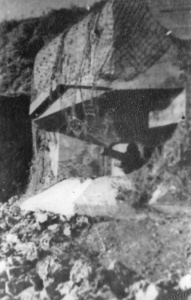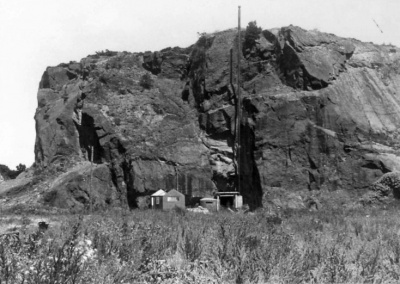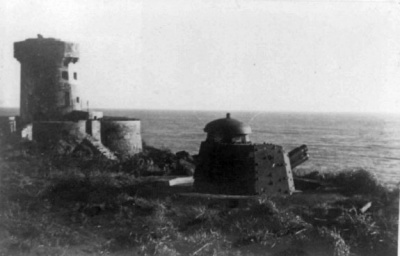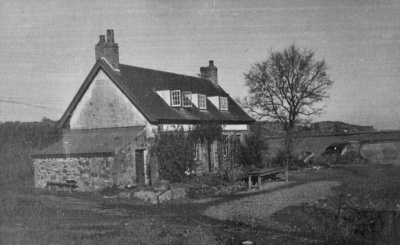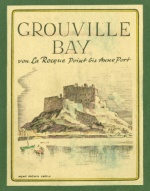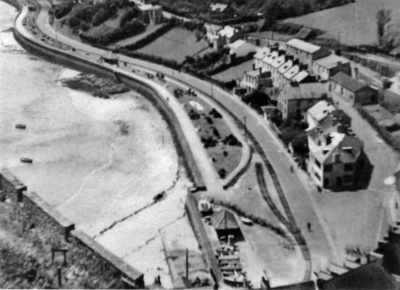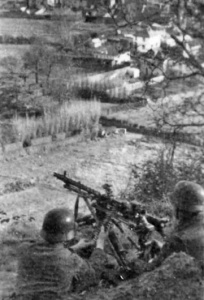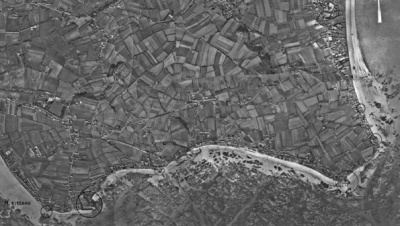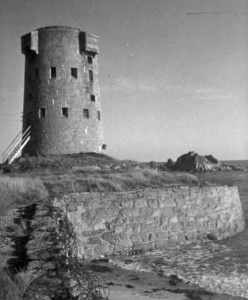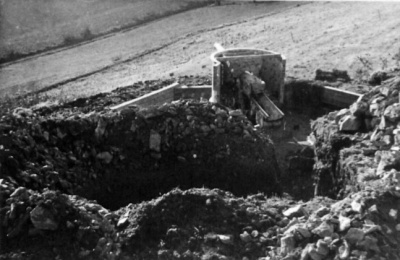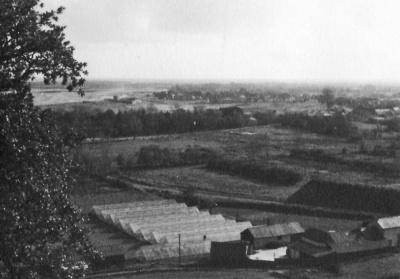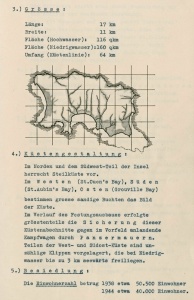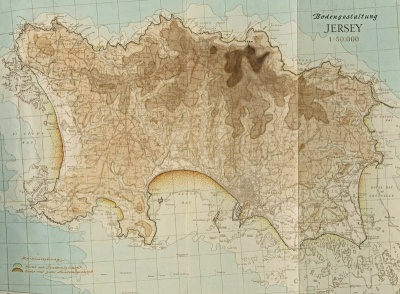Some of these official photographs of German installations were already included on other Jerripedia galleries relating to the Occupation some time before the creation of this gallery. Various sets of these images have been available online for a number of years. Some of the Green Books were included in the Jersey Heritage online catalogue and were copied and uploaded to Jerripedia in 2012. The books were subsequently removed from view and did not resurface until all nine appeared in the new Société website in 2022.
The year before, Jerripedia independently acquired another set of pictures which we now know form part of the CIOS collection. They had been awaiting processing for nearly two years before this page was assembled.
This new gallery [2], containing a representative selection of the photographs in the Société Jersiaise Green Books and the CIOS albums [3], was created in 2023. There are still significant parts of the German defences which are not included, most notably the major installations at Noirmont - Batterie Lothringen - and Les Landes - Batterie Moltke. Jerripedia's own collection of Occupation pictures includes these two locations. A number of installations at the northern end of St Ouen's Bay are also missing. Most of these locations are believed to be covered in the second of the two CIOS albums held by Jersey Archive, which has not been made available online and can only be seen at the Archive.
La Motte/Green Island
Societe Jersiaise blog article
As part of its 150th anniversary celebrations in 2023 La Société Jersiaise created a blog in its website, featuring a series of articles by Martha MacDonald, including the following on the Green Books.
- "As we approach 78 years since the Channel Islands’ Liberation, those of us who did not live through that period of history are once again confronted by the difficulty of fully understanding the harsh realities of the Occupation. How does a community preserve its connection to the past at the point when those events are no longer in living memory? Whilst this question is complicated and deeply troubling, the Islands’ extensive historical archives surely provide some reassurance when facing this challenge.
- "One such collection that sheds light on life under Occupation resides at the Société Jersiaise in the form of the Green Books (so called after their green covers) – a collection of surveys and field guides which were ordered by Nazi High Command to document war time defences in both Jersey and Guernsey. Also known as Festung Jersey (‘Fortress Jersey’), the Green Books record in meticulous detail how the German Occupying Forces defended each stretch of coastline around the Island.
- "Whilst the core purpose of these books is to provide a military record including inventories of weapons, personnel and details of fortifications, bases, and other infrastructure – the way they are presented is rather surprising. The concrete and gunmetal of the Nazi’s presence on the island is interspersed with detailed and sensitive renderings of the island’s coastline in watercolour. Painting, drawing, cartography, photography, calligraphy and other creative skills possessed by non-commissioned officers in the German 319 Divisional Cartographic Section were all deployed to produce the Green Books.
Artistic skill
- "Careful, neat and with great artistic skill, this collection is certainly not what you would expect from documents originating from one of the most brutal and challenging times in both local and world history. The books were taken to the UK by British Troops after the island was liberated in 1945. On 29 October 1947 an incomplete set of these books was presented by the War Office, via the Island’s Lieut-Governor, Sir Edward Grasett, to the Société Jersiaise.
- "While incomplete, the collection of Green Books provides an excellent resource for local historians and Occupation researchers. I sat down with one such researcher, Paul Burnal, a former soldier whose mother was a child in Jersey during the Occupation. Due to this family connection and his military service, Paul explained that he’s always had a 'fascination' with this era of history and, since he retired, he has pursued his interest by writing books about German defences around the island. In this endeavour, the Green Books (in addition to his own field research) have provided him with a wealth of information when researching his own books.
- "'Having an interest in the German fortifications, the Coastal Defensive System [and] the Atlantic Wall – which I’ve had since I was knee high to a grasshopper – I just wanted to study and research more and more about how the Germans defended the Island.”
- "He explained that his experience as an Infantryman in the British Army helps him to analyse these defences from a military strategy perspective: 'This is what the infantry would have been coming up against, how would they have overcome that obstacle? How would they have got past those fortifications? When I write my books, I try and look at it from a soldier’s perspective and say: "this is the defensive position, this is the weapons they’ve got, this is the land, and this is how the Germans would have defended it." So, if you’re attacking this is what you’ve got to get through: and it is quite frightening.'
- "Much of that information about the nature of the German defences is detailed in the Green Books, which became crucial for Paul when researching for his second book Defence Sector East. With their precise level of detail, the books also provided something of a template for Paul when it came to structuring his own writing.
- "'How the Green Books are laid out, that’s how my books are laid out. I follow the same format as theGreen Books: and I just try to elaborate on it and put a bit more detail in.'
'Vitally important history'
- "Commenting on the significance of this collection for local and world history, Paul remarked: 'I would say it’s vitally important. The German Occupation was probably the most momentous part of the island’s history within the context of the Second World War. I think the fact the Occupiers went to such lengths to show how well they had fortified the islands, it’s amazing.'
- "However, he expressed concern that, aside from the island’s annual Liberation Day celebrations, interest in this period of history is 'waning'.
- "'Hopefully, interest in the Occupation will never die off. There will always be that element of people who have got that interest and they’ll want to come and look at the Green Books, so the fact that we’ve got this collection here it’s a vitally important part of the island’s history.”
- "The Société Jersiaise has recently digitised its entire collection of Green Books so that they are available to view online for free. Remarking on this, and on the collection in general, Librarian at the Société Jersiaise, Valérie Noël said: 'The Channel Islands were the only part of the British Isles occupied by German forces during the Second World War. They built a series of fortifications designed to make the islands impregnable, as part of the Atlantic Wall. Festung Jersey or Green Books are the record of the German wartime defences in Jersey.
- "'The collection is unique, having been written by the German forces themselves. It is a rich resource for Occupation researchers and contains several drawings, photographs, maps, and watercolours depicting the island at the time of the Occupation. This collection is very popular among Jersey Occupation researchers and its digitisation will allow a wider audience to discover this unique resource.'"
Images enhanced
Many of the images from both sets are in very poor condition. The Jerripedia team spent many hours digitally enhancing them as far as possible. Some of the poorest have had to be excluded. It appears that the Army division commissioned to take the photographs did not use a professional photographer. Perhaps nobody suitable was present in the island at that time and nobody could be brought in from Germany that late in the war. Some of the photographs include very strange subjects and the suspicion is that many were 'snapshots' taken by the men manning the installations at the time - using the equivalent of Box Brownies rather than Army issue Leicas.
Because of the overlap between the two collections we have not attempted to follow the division into specific sectors as used in the nine Green Books, but to divide the pictures into more general coastal zones. Our gallery starts at St Helier Harbour and follows the island's coastline in a clockwise direction.
Links to 21st century pictures of some of the installations in the website bunkersite.com are included in the footnotes.
Click on any thumbnail picture to see a larger version. Some captions are revealed by moving the cursor over a picture
St Helier Harbour [4]
Air raid shelter on the corner of Conway Street next to the Pomme d'Or Hotel
West Park [5]
St Aubin's Bay [6]
South west coast
West coast
North coast
A map of the north coast at Plemont ...
Stutzpunkt (strongpoint) Plemont, was a major installation with multiple elements, manned by four NCOs and 28 men, protecting the north-west corner of the island from invasion [9]
Wiederstandnest Jute was half way between Plemont and Greve de Lecq. It was manned by two NCOs and 13 men
The entrance to a casemate at STP Greve de Lecq [10]
There were two defence complexes close to each other on the north coast, designated Sorel A [11] and Sorel B [12]. The larger of the two, Sorel B, was manned by four officers, three senior NCOs and 27 men. Armaments included a 10.5cm cannon. Sorel A was manned by four NCOs and 16 men. As well as a 60cm searchlight, its weaponry included six flame throwers
La Crete Fort, [13] in the middle of Bonne Nuit Bay, was built in 1834 as protection against a French invasion. The Germans adapted it for their own use as a small resistance nest, manned by one NCOs and six men [14]
A defence position at Bonne Nuit [15]
An anti-aircraft gun at Wiederstandnest Jasmin, on the clifftop between Bonne Nuit and Bouley Bay
Bouley Bay was the most protected area of the north coast. There was a Stutzpunkt in the bay itself, manned by a officer, three NCOs and 15 men [16]; Wiederstandnest Oben on the cliff above, manned by one NCO and 14 men; and a further wiederstandnest at the top of the hill where the Bouley Bay Hotel then stood, manned by two NCOs and six men
North-east coast
Fliquet tower, at the north-east corner of the island, was converted by the Germans into a wiederstandnest manned by two NCOs and ten men. It housed a 10.5 cm cannon, not included in any of the Green Book photographs[18]
Grouville Bay
The long stretch of sandy bay down the east coast from Gorey [19] to La Rocque was seen as a potential landing point for any attempt to retake the island and was heavily defended. Several of the coastal defences constructed during the era of the Napoleonic wars in the 18th and 19th centuries were adapted by the Germans for 20th century warfare. Other installations away from the coast are covered in the inland section further down this page
Mont Orgueil at Gorey. The port was defended by Wiederstandnest Hafen Gorey and a second installation in the castle itself. The harbour unit was manned by two NCOs and up to 21 men
Fort Henry, the first 18th century installation south of Gorey, was much altered and heavily defended. It was manned by an officer, three NCOs and 32 men [20]
The entrance to one of the new casemates built by the Germans around Fort Henry on Grouville Common ...
... and south to La Rocque
Le Hurel was one of the coastal towers taken over by the Germans ... [21]
South-east coast
La Rocque point is dominated by a coastal tower and the 19th century property Rocqueberg. There were two resistance nests here, designated La Rocque A and La Rocque B [22]. They were manned, respectively, by four NCOs and 19 men, and two NCOs and 14 men
Einsatzstellung Le Hocq, one of two photographs in the St Clement Green Book, which gives no details of the installation [23]
La Motte
What islanders now universally call Green Island was given its original name of La Motte by the Germans, who built a resistance nest there, manned by an officer, three NCOs and 21 men
Inland locations
This section of our gallery covers various inland locations, mainly in the east and west of the island
Overall statistics etc
The ninth Green Book owned by La Société Jersiaise, Taktische Ubersichten contains illustrated statistics of the strength of the German military in Jersey throughout the Occupation, including a number of maps never published elsewhere
Notes and references
- ↑ The two albums can be viewed here by subscribers to the Archive online catalogue
- ↑ We have deliberately chosen to create a single, large gallery, because this is the first time that these two important collections of photographs have been assembled in one place
- ↑ A small number of images included here may not be from either collection but are pictures taken during the Occupation by the Germans for other purposes. There are also a few post-Liberation photographs which are clearly identified as such
- ↑ Today's view of the Victoria Pier installation from bunkersite.com and Further modern pictures of harbour installations
- ↑ Today's pictures of West Park installations in the website bunkersite.com
- ↑ Pictures from bunkersite.com of installations in the bay in the 21st century
- ↑ Today surfers gather there, as shown in these pictures in bunkersite.com
- ↑ Modern pictures of the restored La Mare Mill resistance nest, from bunkersite.com
- ↑ The bunkers remain sealed. Recent pictures of the Plemont strongpoint
- ↑ 21st century pictures of Greve de Lecqfrom bunkersite.com
- ↑ Today's pictures of Sorel A from bunkersite.com
- ↑ Today's pictures of Sorel B from bunkersite.com
- ↑ Today's pictures of La Crete Fort from bunkersite.com
- ↑ Today the fort is used as a holiday let, administered by Jersey Heritage. In the 1920s it was leased to Jimmy Rimington, a fruiter and florist at No 13 King Street, and grandfather of Jerripedia editor Mike Bisson, whose mother used to enjoy family weekends there
- ↑ Today's pictures of Bonne Nuit harbour from bunkersite.com
- ↑ Today's pictures from bunkersite.com of a bunker at Bouley Bay harbour converted to a summerhouse
- ↑ Today's pictures of WN Verclut from bunkersite.com
- ↑ Today's pictures of WN Fliquet from bunkersite.com
- ↑ Today's pictures of Gorey defences from bunkersite.com
- ↑ Today's pictures of Fort Henry from bunkersite.com
- ↑ Today's pictures of Le Hurel from bunkersite.com
- ↑ Today's pictures of La Rocque A from bunkersite.com and La Rocque B
- ↑ Today's views of Le Hocq from bunkersite.com










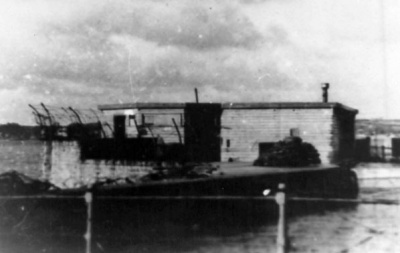
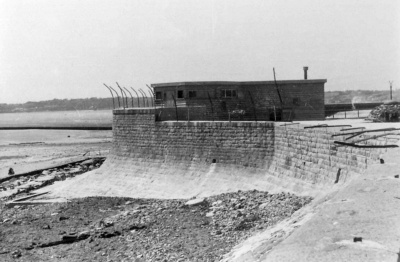





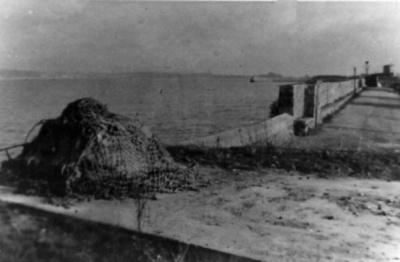









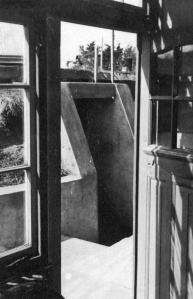


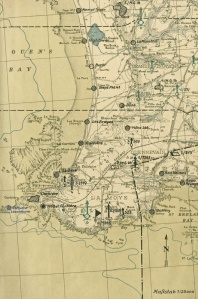












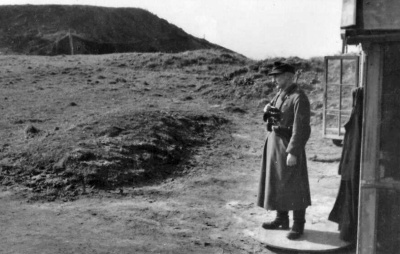
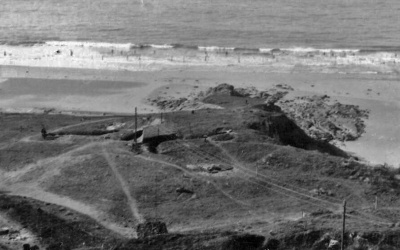


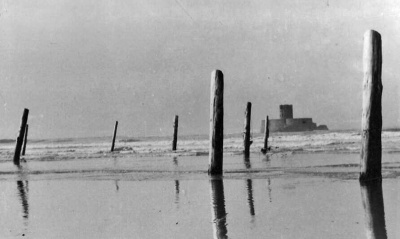
























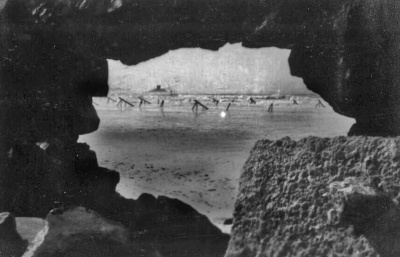

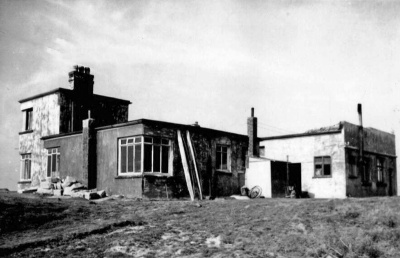

















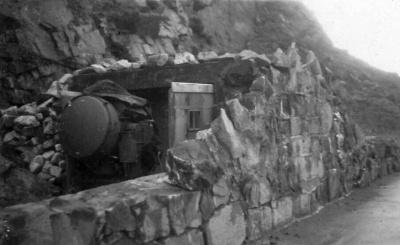






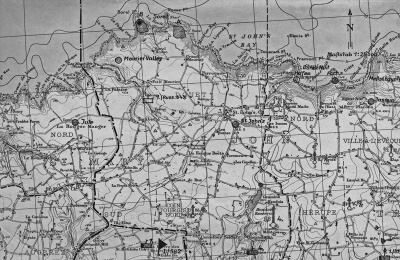














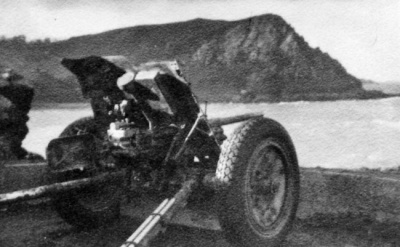



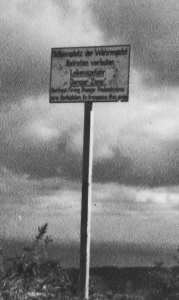





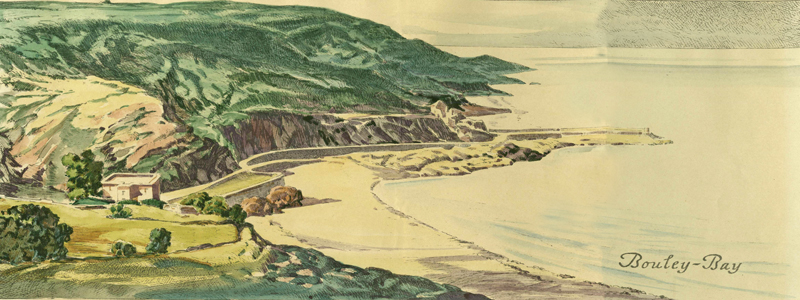
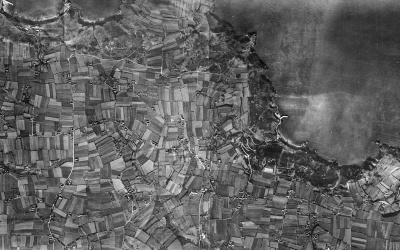
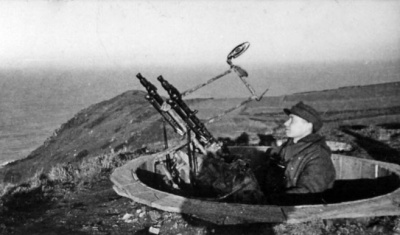







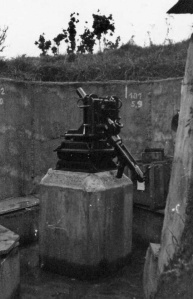












![Heavy artillery defending the breakwater at St Catherine, invariably described correctly by the Germans, as Verclut [17]](/images/8/80/SJ23GreenBookWNMoleVerclut.jpg)










